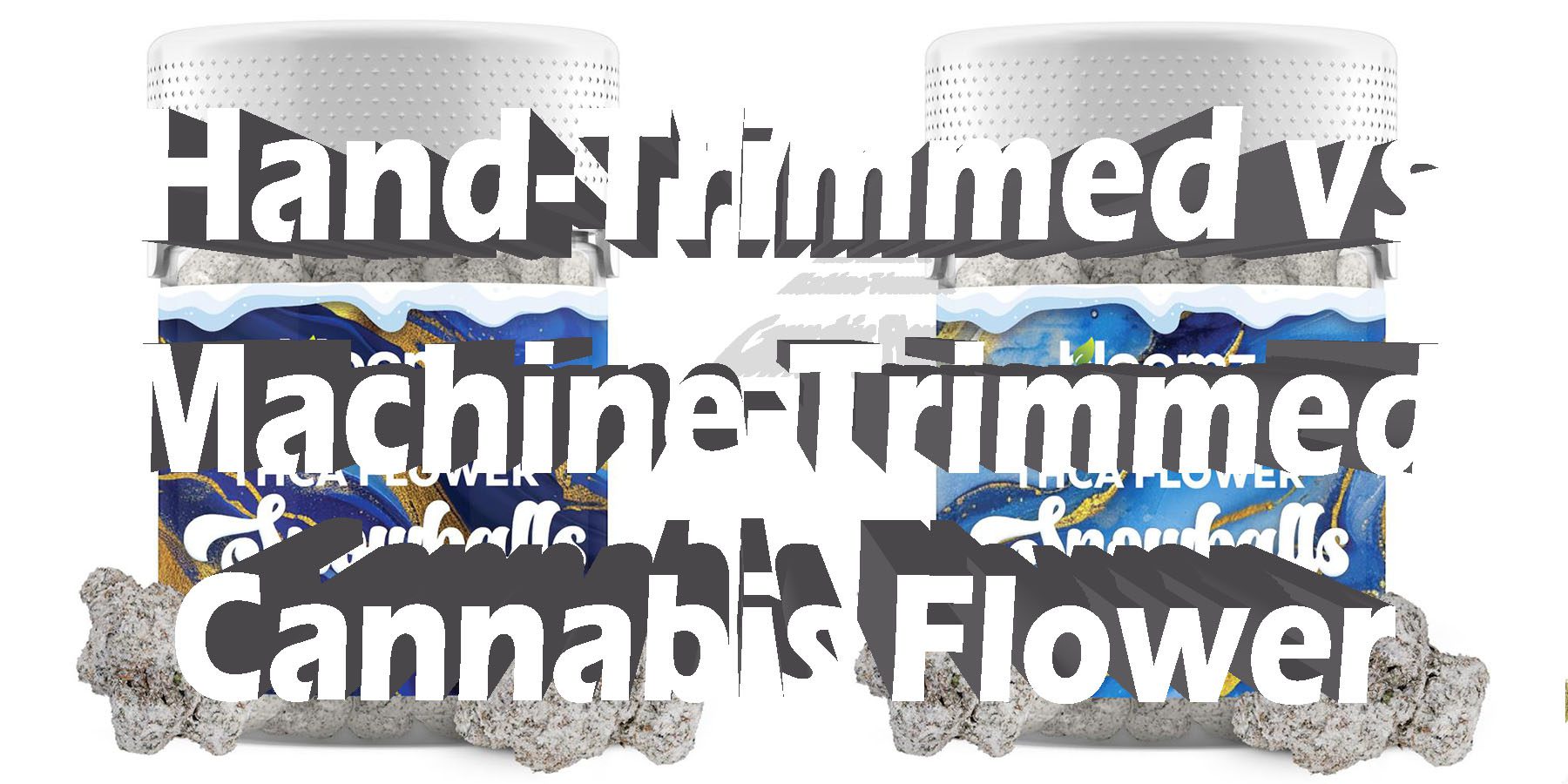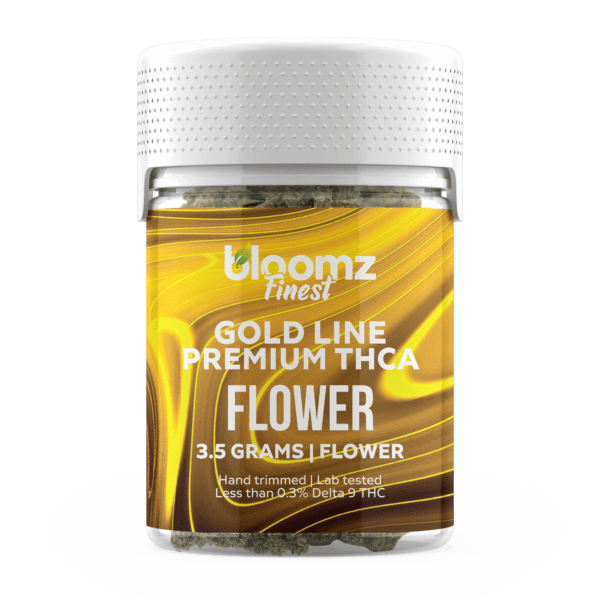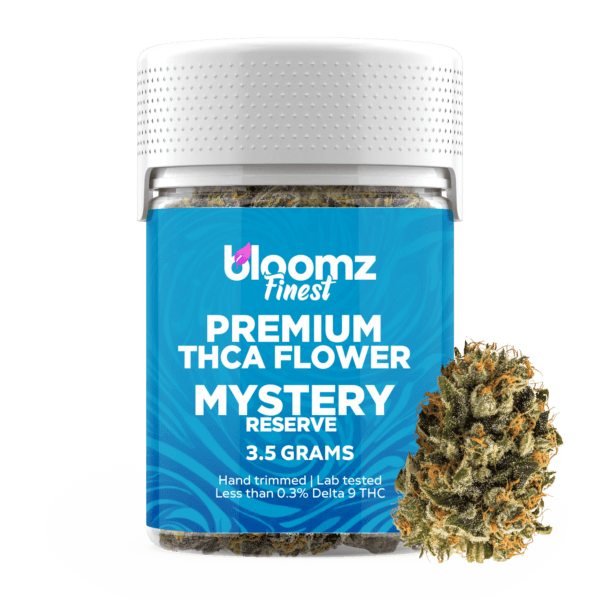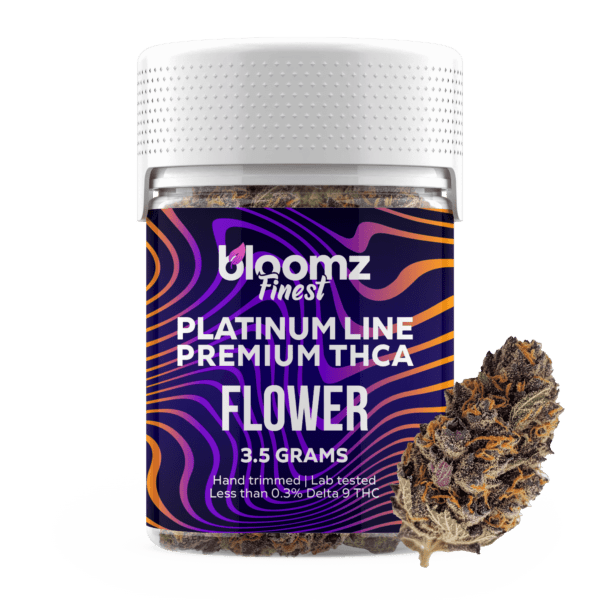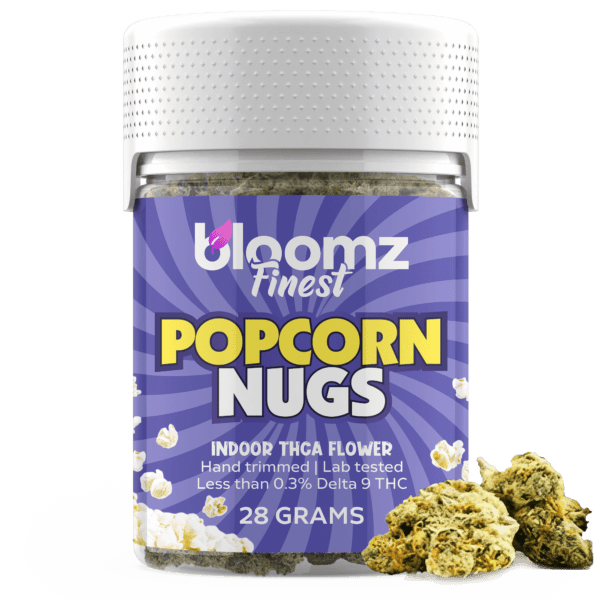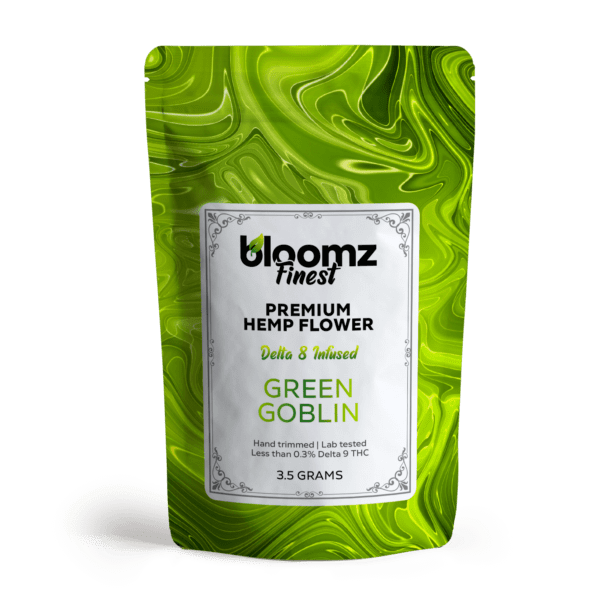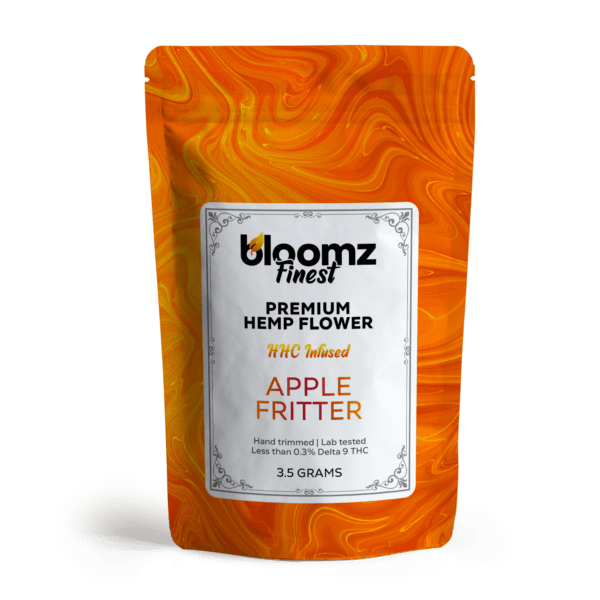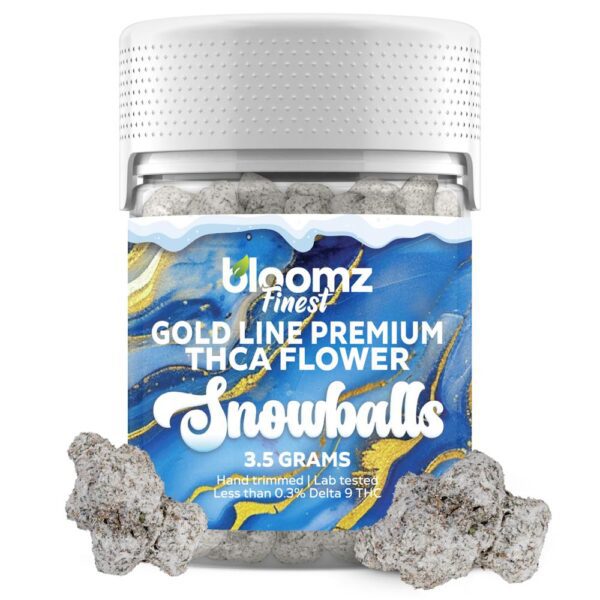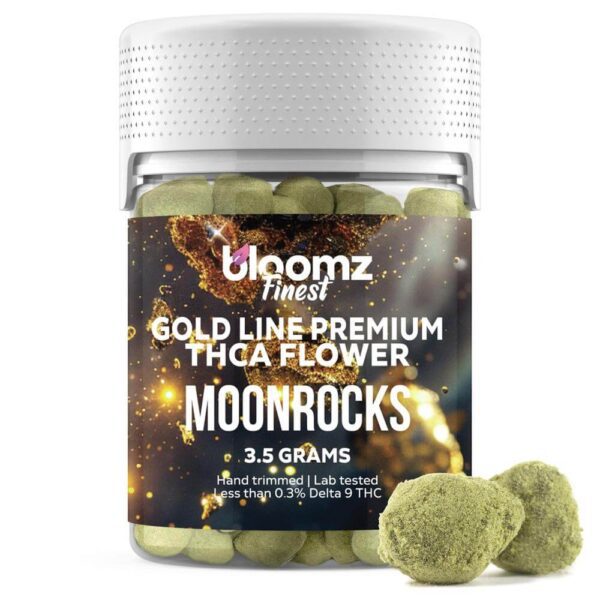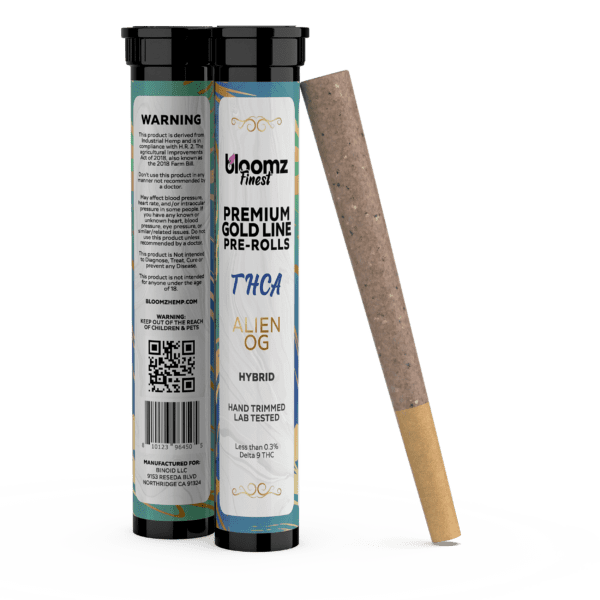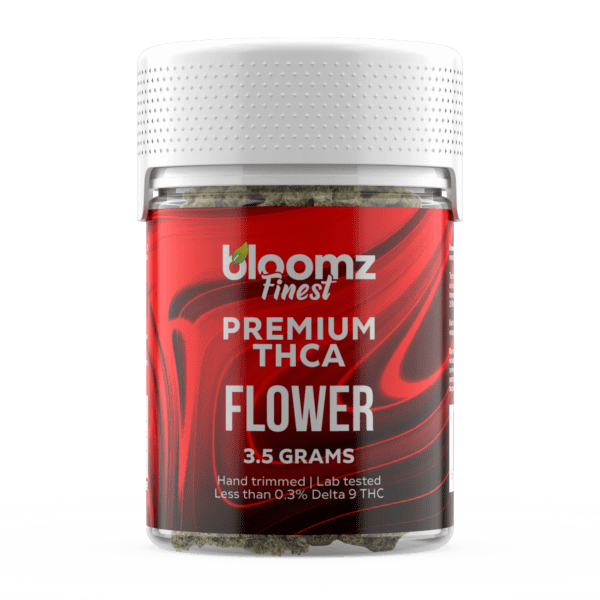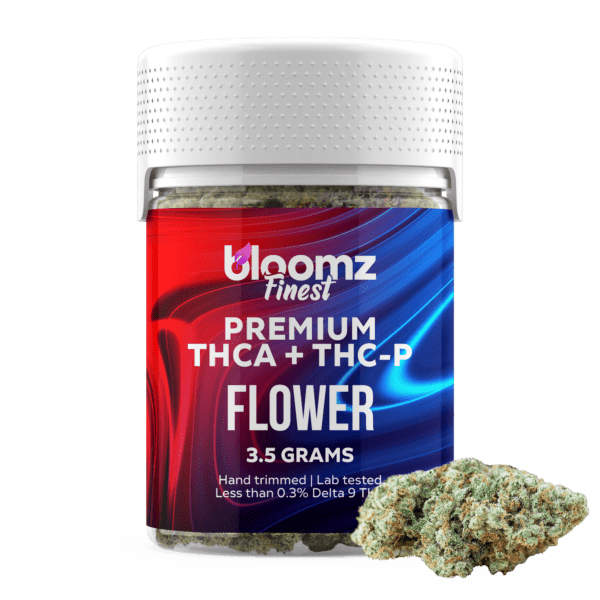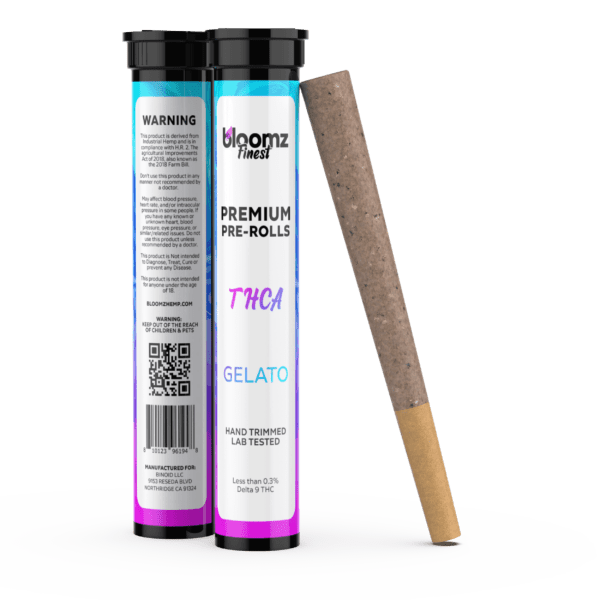In the ever-expanding universe of cannabis, the journey from a flourishing plant to the final product on a dispensary shelf is a path paved with countless decisions, each one meticulously calculated to influence the final experience. Among these critical choices, one of the most debated and significant is the method used to trim the cannabis flower. This seemingly simple step of removing excess leaves is, in reality, a pivotal moment that can dramatically shape the flower’s appearance, aroma, and even its character.
It’s a process where artistry and efficiency often find themselves in a delicate dance, a balancing act between time-honored tradition and modern technological advancement. As consumers become more discerning, the distinction between hand-trimmed and machine-trimmed flower has emerged as a key talking point, a detail that can speak volumes about a brand’s philosophy and its commitment to quality. Understanding this fundamental difference is to gain a deeper appreciation for the craft and care that goes into creating a premium botanical product.
To Buy Cannabis Flower Click Here
Recommended products
-
THCA Flower – Indoor Exotics – Gold Line
$37.99$69.99 -
THCA Flower – Mystery Reserve
$41.99$79.99 -
THCA Flower – Platinum Line
$49.99$79.99 -
THCA Smalls
$149.99$256.99
Getting Some Key Insights into Cannabis Flower
Before diving into the nuances of trimming, it’s essential to have a clear picture of what cannabis flower actually is. The term refers to the prized, consumable blossoms of a female cannabis plant, often referred to by a variety of names such as buds or nugs. These flowers are the plant’s reproductive powerhouses, and they are where the vast majority of cannabinoids and terpenes are produced and concentrated. These are the very compounds responsible for the plant’s wide array of effects, its distinctive aromas, and its complex flavor profiles. In the controlled environment of cannabis cultivation, female plants are typically isolated from males to prevent pollination.
This strategic separation prompts the female plants to pour all of their energy into producing larger, more resinous, and entirely seedless flowers, resulting in the high-quality, potent buds that are so sought after. The visual allure of these flowers is undeniable, often presenting a stunning mosaic of deep greens and rich purples, generously dusted with a crystalline coating of trichomes and interwoven with fiery orange pistils. This intricate and beautiful botanical structure is the heart of the cannabis plant’s appeal, the culmination of superior genetics, expert cultivation, and meticulous post-harvest processing.
The transformation of a tiny seed or a delicate clone into a perfectly cured, ready-to-consume cannabis flower is a long and fascinating journey that requires a profound understanding of horticulture and a deep commitment to the craft. It is a labor of love, demanding patience, precision, and an intimate knowledge of the plant’s life cycle. The exceptional quality of the cannabis flower that connoisseurs have come to expect is a direct result of this dedicated and painstaking effort. Here is a more in-depth look at the essential steps involved in crafting this remarkable botanical product:
Cultivation and the Vegetative Stage: The entire process kicks off with the careful selection of superior genetics, as the chosen strain will fundamentally dictate the characteristics of the final cannabis flower product, from its potential effects to its unique aromatic signature. Once the seeds have successfully germinated or the clones have established strong roots, the young plants embark on the vegetative stage. During this crucial period, which can span from several weeks to a couple of months, the plants are singularly focused on developing a robust and healthy root system, a strong, supportive stalk, and an abundance of lush, green foliage. To encourage this vigorous growth, cultivators typically provide an extended light cycle, often between 18 and 24 hours per day. Throughout this phase, growers must act as vigilant guardians, meticulously controlling a host of environmental variables including temperature, humidity, and airflow, while also providing a precisely balanced diet of essential nutrients to ensure the plants are strong, healthy, and fully prepared to support the demanding flowering stage that lies ahead.
The Flowering Stage: To signal the transition into the flowering stage, cultivators alter the light cycle to a strict regimen of 12 hours of light and 12 hours of complete, uninterrupted darkness. This change in the photoperiod serves as a natural trigger for the female plants, informing them that it is now time to shift their focus from vegetative growth to the production of cannabis flower. This phase is undoubtedly the most critical and visually captivating part of the entire cultivation process. Over the course of the following weeks, the plants will undergo a final growth spurt, and the first signs of flower development will emerge at the nodes of the plant. These initial small buds will gradually and progressively swell and mature, developing the dense, highly resinous characteristics that are the hallmark of high-quality cannabis. It is during this dynamic period that the production of cannabinoids and terpenes skyrockets, creating the unique and complex chemical profile of each individual strain.
Harvesting at the Peak of Perfection: The timing of the harvest is a make-or-break decision that can profoundly influence the final quality, potency, and overall character of the cannabis flower. Seasoned cultivators will employ a keen eye and often a magnifying glass to closely examine the trichomes, the tiny, mushroom-shaped, crystal-like glands that cover the surface of the flowers. The color of these trichomes—which transitions from clear to cloudy and finally to amber—serves as a precise indicator of the plant’s peak maturity and the state of its cannabinoid profile. Harvesting too early can lead to a product with underdeveloped potency and flavor, while waiting too long can result in the degradation of some of the most desirable cannabinoids and terpenes. The act of harvesting itself is performed with great care and precision, often involving the meticulous hand-cutting of the mature plants, either in their entirety or branch by branch, to preserve the delicate trichomes and prevent any unnecessary damage to the precious flowers.
The Art of Drying and Curing: Following the harvest, the true artistry of post-production begins with the critically important drying and curing process. The freshly harvested branches are carefully hung in a dark, climate-controlled environment where both temperature and humidity are maintained at specific, optimal levels. This slow and deliberate drying process, which can take a week or even longer, is absolutely essential for preserving the full spectrum of cannabinoids and terpenes while simultaneously allowing for the breakdown of chlorophyll, which can otherwise impart a harsh, grassy taste to the final product. Once the branches have reached the ideal level of dryness, the individual buds are meticulously trimmed from the stems. These trimmed buds are then transferred into airtight containers, typically glass jars, to begin the curing process. Curing, a patient process that can extend for several weeks or even months, is the final, crucial step in developing the flower’s full, nuanced flavor and rich aromatic profile, resulting in a product that is smoother, more flavorful, and ultimately, far more enjoyable.
Once the cannabis flower has been so carefully cultivated and expertly prepared, there are several primary avenues for its consumption, each providing a distinctly different kind of experience. The most traditional and widely recognized method is, of course, smoking. This can be accomplished through a variety of apparatuses, including classic pipes, intricate water pipes (commonly known as bongs), or by rolling the finely ground flower into a joint or a blunt. Smoking offers a very rapid onset of effects, as the active compounds are quickly and efficiently absorbed into the bloodstream via the lungs. An increasingly popular and more modern alternative is vaporization, or vaping. This method involves heating the cannabis flower to a precise temperature that is hot enough to release the cannabinoids and terpenes in the form of a vapor, but not so hot as to cause combustion. Many users have gravitated towards vaping as it can deliver a cleaner, more pronounced flavor and is often perceived as a gentler alternative to traditional smoking. Finally, cannabis flower can be utilized in the kitchen for cooking and baking, creating a wide world of edibles. To do this, the flower must first undergo a process known as decarboxylation, which involves heating it to activate the cannabinoids. The now-activated flower is then typically infused into a fat, such as butter or oil, which can subsequently be incorporated into a vast array of recipes, from classic sweet treats like brownies and cookies to more complex and savory culinary dishes, offering a more potent and longer-lasting experience.
For anyone venturing into the diverse and sometimes complex world of cannabis flower, a key piece of foundational knowledge is the understanding of the three primary classifications: Indica, Sativa, and Hybrid. Originally, these categories were established based on the plant’s distinct physical characteristics and their geographical points of origin.
Indica plants, which hailed from the Hindu Kush mountain region near Afghanistan, were typically characterized as being shorter and bushier in stature with broad, wide leaves, and were generally believed to produce more relaxing, calming, and sedative effects. In contrast, Sativa plants, which flourished in the equatorial regions of the globe such as Colombia, Mexico, and Thailand, were taller and lankier in their growth patterns with long, narrow leaves, and were associated with more uplifting, cerebral, and energizing experiences. Hybrid strains, as the name suggests, are the result of crossbreeding Indica and Sativa plants, and they are intentionally cultivated to produce a carefully selected combination of traits inherited from both of their parent strains.
It is important to note, however, that in today’s highly sophisticated and global cannabis market, the lines between these traditional classifications have become increasingly blurred due to decades of extensive and intricate crossbreeding. While the terms Indica, Sativa, and Hybrid are still widely used in dispensaries and by consumers as a general navigational guide, a more scientifically accurate and reliable method for predicting the potential effects of a particular flower is to look closely at its specific and unique cannabinoid and terpene profile.
Recommended products
Why Do Most Companies Advertise Their Cannabis Flower as Either Being Hand-Trimmed or Machine-Trimmed?
In the increasingly competitive and sophisticated cannabis market, brand differentiation is paramount. Companies are constantly seeking ways to stand out on crowded dispensary shelves and to communicate the quality and value of their products to discerning consumers. The method used for trimming cannabis flower has emerged as a significant and easily marketable point of distinction. Advertising a product as “hand-trimmed” is a powerful way for a brand to signal a commitment to artisanal quality, meticulous care, and a premium, top-shelf experience. It evokes images of skilled artisans carefully sculpting each bud to perfection, preserving its natural beauty and, most importantly, its precious trichomes. This narrative appeals directly to connoisseurs and those who are willing to pay a premium for what they perceive as a superior product, much like the appeal of handcrafted goods in other industries.
On the other hand, the term “machine-trimmed” is often used to communicate a different set of values, primarily efficiency, consistency, and affordability. For large-scale commercial operations, machine trimming is a practical necessity, allowing them to process vast quantities of product quickly and bring it to market in a timely manner. By advertising this method, companies can be transparent about their production process and appeal to a segment of the market that prioritizes value and accessibility. While it may lack the romantic appeal of hand-trimming, it speaks to a modern, technologically advanced approach to cannabis production. This transparency can build trust with consumers who appreciate knowing how their products are made and who are looking for a reliable and consistent experience at a more accessible price point.
Ultimately, the decision to advertise the trimming method is a strategic marketing choice that helps to define a brand’s identity and target its ideal consumer. It’s a shorthand way of communicating a wealth of information about the product’s journey from harvest to packaging. A “hand-trimmed” label suggests luxury, attention to detail, and a focus on preserving the delicate nuances of the flower. A “machine-trimmed” label, while sometimes viewed less favorably by purists, can signify a brand’s ability to deliver a consistent and affordable product at scale. In a market where consumers are hungry for information and eager to understand the story behind their cannabis, the trimming method has become a simple yet effective way for companies to tell that story and to guide consumers toward the product that best aligns with their personal preferences and priorities.
Hand-Trimmed vs. Machine-Trimmed Cannabis Flower: Which is the Better Option?
The debate over the superiority of hand-trimming versus machine-trimming is one of the most enduring conversations in the cannabis industry, with passionate advocates on both sides. There is no single, universally correct answer, as the “better” option often depends on a complex interplay of factors including the scale of the operation, the target market, and the ultimate goals of the producer. To make an informed choice as a consumer, it’s essential to understand the intricacies, advantages, and disadvantages of each method.
Hand-Trimmed Cannabis Flower
Hand-trimming is the traditional, time-honored method of preparing cannabis flower for consumption. It is a meticulous and labor-intensive process that involves a person, often referred to as a “trimmer”, using a pair of small, sharp scissors to carefully remove the excess sugar leaves from each individual bud. This is a delicate art form that requires a great deal of patience, a steady hand, and a keen eye for detail. The goal of the hand-trimmer is not simply to remove the leaves, but to do so in a way that preserves the natural shape and structure of the bud while minimizing any damage to the fragile trichomes, the resinous glands that house the majority of the plant’s cannabinoids and terpenes.
The process of hand-trimming is often seen as a final act of respect for the plant, a way of honoring the time and effort that went into its cultivation. Trimmers will typically hold the bud by its stem to avoid direct contact with the flower itself, gently rotating it to access all the nooks and crannies where sugar leaves may be hiding. This close, personal interaction with each bud allows the trimmer to make precise cuts, tailoring the trim to the unique characteristics of each individual flower. It’s a method that prioritizes quality over quantity, a philosophy that is deeply ingrained in the culture of craft and artisanal cannabis production.
For many craft cannabis cultivators, hand-trimming is a non-negotiable step in their production process. They believe that the personal touch and attention to detail that comes with hand-trimming is essential for producing a truly top-shelf product. This method allows for a level of quality control that is simply not possible with automated systems. Trimmers can inspect each bud for any potential issues, such as mold, pests, or seeds, ensuring that only the highest quality flowers make it to the final packaging. This meticulous inspection process is a key reason why hand-trimmed cannabis flower often commands a higher price in the market.
The decision to hand-trim is a clear statement of a brand’s values. It communicates a dedication to craftsmanship, a respect for the plant, and a commitment to providing the consumer with the best possible experience. While it is a slower and more costly process, the proponents of hand-trimming argue that the superior quality of the final product more than justifies the additional time and expense. In a world of increasing automation, hand-trimming stands as a testament to the enduring value of human touch and artistry in the creation of premium cannabis flower.
Pros & Cons:
Every method has its strengths and weaknesses, and hand-trimming is no exception. Understanding these pros and cons is key to appreciating why some producers swear by this method while others opt for more modern alternatives.
Pros:
Superior Trichome Preservation: The careful, gentle handling involved in hand-trimming is unparalleled in its ability to preserve the delicate trichomes, leading to a more potent and flavorful final product.
Enhanced Bag Appeal: Hand-trimmed buds are often more aesthetically pleasing, retaining their natural shape and structure, which is a major selling point for discerning consumers.
Precision and Customization: A skilled trimmer can tailor their technique to the specific characteristics of each strain and even each individual bud, highlighting its best features.
Meticulous Quality Control: The close inspection of each bud during the hand-trimming process provides an excellent opportunity to identify and remove any subpar or compromised cannabis flowers.
Job Creation: Hand-trimming is a labor-intensive process that provides employment opportunities within the cannabis industry, supporting local economies.
Reduced Product Loss: With precise cuts, there is very little risk of accidentally removing parts of the actual flower, ensuring that the maximum amount of usable product is preserved.
A Smoother Experience: By meticulously removing the sugar leaves, which can be harsh when smoked, hand-trimming can result in a smoother and more enjoyable consumption experience.
Cons:
Time-Consuming: Hand-trimming is a very slow process, with a single person only able to trim a relatively small amount of flower in a day.
High Labor Costs: The need for a skilled and dedicated trimming crew makes hand-trimming a significantly more expensive option, which is often reflected in the final retail price.
Potential for Inconsistency: The quality of the trim can vary from one trimmer to another, and even a single trimmer’s performance can be affected by fatigue over a long shift.
Recommended products
-
THCA Moonrocks – Gold Line
$57.99$89.99 -
Blazed Exotic THCA Flower
$36.99$79.99 -
Exotic THCA Pre-Rolls Gold Line – 3-Pack/6 Pack
$36.99$69.99
Machine-Trimmed Cannabis Flower
Machine-trimming represents the modern, technologically driven approach to preparing cannabis flower. It involves the use of specialized automated equipment designed to quickly and efficiently remove the excess leaves from large quantities of buds. These machines come in a wide variety of shapes and sizes, from small, countertop models suitable for home growers to large, industrial-scale systems used by commercial cultivators. The basic principle behind most trimming machines involves tumbling the buds within a chamber where a series of blades or grates work to strip away the unwanted leaf material. This automated process allows for a massive increase in processing speed compared to traditional hand-trimming.
The primary driver behind the adoption of machine-trimming is the need for efficiency and scalability in the commercial cannabis industry. As the demand for cannabis has skyrocketed, producers have had to find ways to process their harvests more quickly to meet market needs. A single trimming machine can do the work of dozens of human trimmers in a fraction of the time, dramatically reducing labor costs and shortening the time it takes to get the product from the drying room to the dispensary shelf. This efficiency is a critical factor for large-scale operations that are dealing with hundreds or even thousands of pounds of flower per harvest.
Over the years, the technology behind cannabis trimming machines has advanced significantly. Early models were often criticized for being too rough on the buds, resulting in a significant loss of trichomes and a final product that was often over-trimmed and lacking in bag appeal. However, newer, more sophisticated machines have been engineered to be much gentler on the flower. Many modern trimmers feature adjustable speed settings, non-stick surfaces, and innovative bladeless designs that use gentle tumbling or air currents to remove the leaves while minimizing damage to the precious trichomes. This has helped to close the quality gap between machine-trimmed and hand-trimmed cannabis flower.
Despite these technological advancements, the debate over the quality of machine-trimmed cannabis continues. Proponents argue that modern machines can produce a consistent and high-quality product that is virtually indistinguishable from hand-trimmed flower to the average consumer. They point to the benefits of reduced handling, which can lead to a more sanitary product, and the ability to offer a more affordable product to a wider range of consumers. Machine-trimming is a testament to the power of innovation in the cannabis industry, offering a practical solution to the challenges of large-scale production while striving to maintain a high standard of quality.
Pros & Cons:
The efficiency of machine trimming comes with its own set of trade-offs. Examining the pros and cons reveals why this method is so prevalent in the commercial market, as well as the potential sacrifices that come with automation.
Pros:
Incredible Speed and Efficiency: Machine trimmers can process vast quantities of cannabis in a very short amount of time, dramatically increasing productivity.
Reduced Labor Costs: By automating the trimming process, companies can significantly reduce their reliance on expensive and often hard-to-find trimming crews.
Consistency: Machines produce a uniform and consistent trim, which can be desirable for brands that want to deliver a predictable product to their customers.
Increased Affordability: The savings in labor costs can be passed on to the consumer, making machine-trimmed flower a more accessible and budget-friendly option.
Scalability: Machine trimming is essential for large-scale commercial operations that need to process massive harvests in a timely manner.
Improved Sanitation: Reduced human handling of the product can lead to a more sanitary final product with less risk of contamination.
Cons:
Potential for Trichome Damage: Even the most advanced machines can be rougher on the buds than a careful human hand, leading to a potential loss of trichomes and a decrease in potency and flavor.
Lack of Precision: Machines trim indiscriminately, which can result in the over-trimming of some buds and the under-trimming of others, and they cannot adapt to the unique shape of each flower.
Reduced Bag Appeal: Machine-trimmed buds can sometimes have a more uniform, rounded appearance that lacks the natural, artisanal beauty of a hand-trimmed cannabis flower.
One Last Determination: Expiration – Does Hand-Trimmed or Machine-Trimmed Cannabis Flower Last Longer?
The question of longevity and how the trimming method might affect the shelf life of cannabis flower is an important one for both consumers and producers. A well-preserved flower will retain its potency, flavor, and aroma for a longer period, ensuring a better experience down the road. The key factors that influence the degradation of cannabis are exposure to light, heat, oxygen, and physical agitation, all of which can be influenced by the trimming process.
The argument for hand-trimmed cannabis flower having a longer shelf life often centers on the preservation of the trichomes. A more intact and robust layer of trichomes can act as a natural protective barrier for the cannabinoids and terpenes within. When these trichomes are damaged or knocked off during a more aggressive machine-trimming process, the flower can become more susceptible to the degrading effects of the environment. A hand-trimmed bud, with its trichome shield largely intact, may therefore be better equipped to withstand the test of time.
Furthermore, the very nature of hand-trimming, with its gentle and precise approach, leaves the overall structure of the bud more intact. A denser, less-damaged bud has less surface area exposed to the air, which can slow down the process of oxidation. In contrast, a machine-trimmed bud, which may have been subjected to more tumbling and abrasion, might have a more compromised structure, potentially accelerating its degradation. The meticulous removal of sugar leaves in hand-trimming also ensures that there is less excess plant material to break down over time, which could otherwise affect the overall quality and flavor of the stored cannabis flower.
However, it’s also important to consider the role of the drying and curing process, which is arguably even more critical to the longevity of cannabis than the trimming method itself. A properly dried and cured flower, regardless of how it was trimmed, will have a much longer shelf life than a product that was rushed through these crucial post-harvest stages. Ultimately, while a careful hand-trim may provide a slight edge in terms of long-term preservation due to better trichome and structural integrity, the overall quality of the cultivation, drying, and curing process will have the most significant impact on how long your cannabis flower will maintain its desirable qualities.
Which Trimmed Cannabis Flower Option Will You Opt For?
The choice between hand-trimmed and machine-trimmed cannabis flower is ultimately a reflection of your personal priorities and what you value most in your botanical experience. There is no right or wrong answer, only a path that aligns with your individual preferences for quality, aesthetics, and price. Do you see cannabis as an artisanal product, a craft to be savored for its nuanced beauty and the human touch that went into its creation?
Or do you prioritize consistency, accessibility, and the marvels of modern efficiency? This decision is a personal one, a final, crucial choice in the long and fascinating journey of the cannabis flower from the soil to your hands. As you stand before the dispensary counter or shopping online, armed with this deeper understanding, you’re now empowered to make a choice that resonates with your own unique cannabis philosophy.

